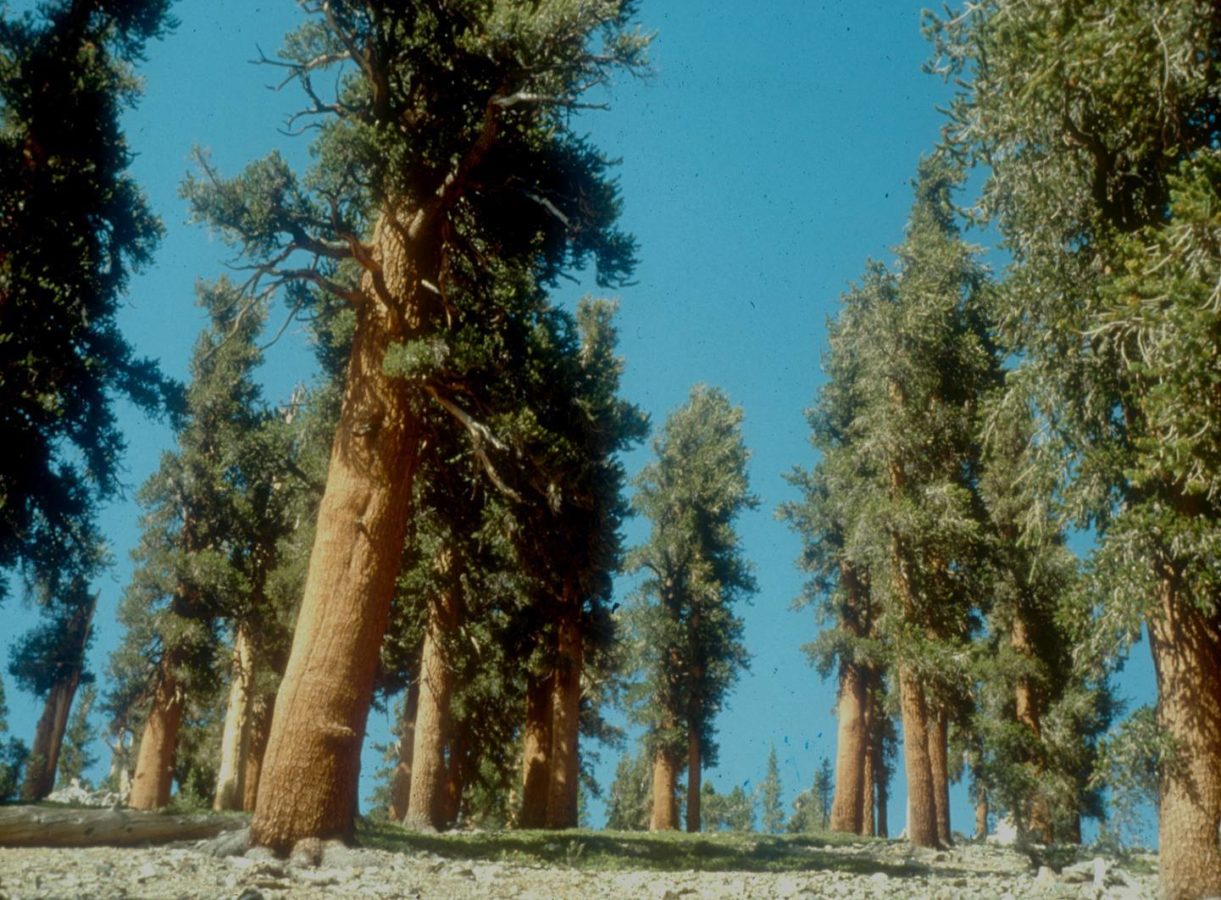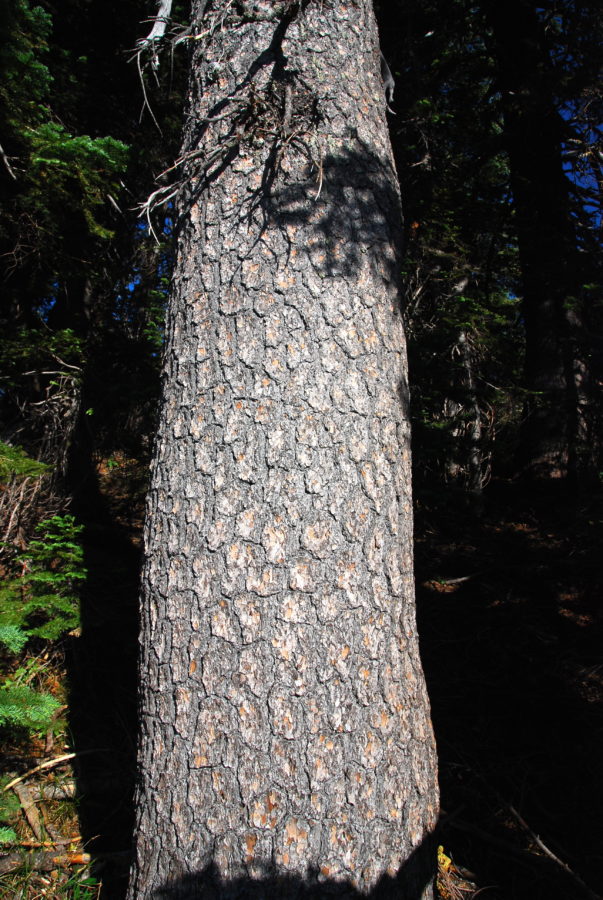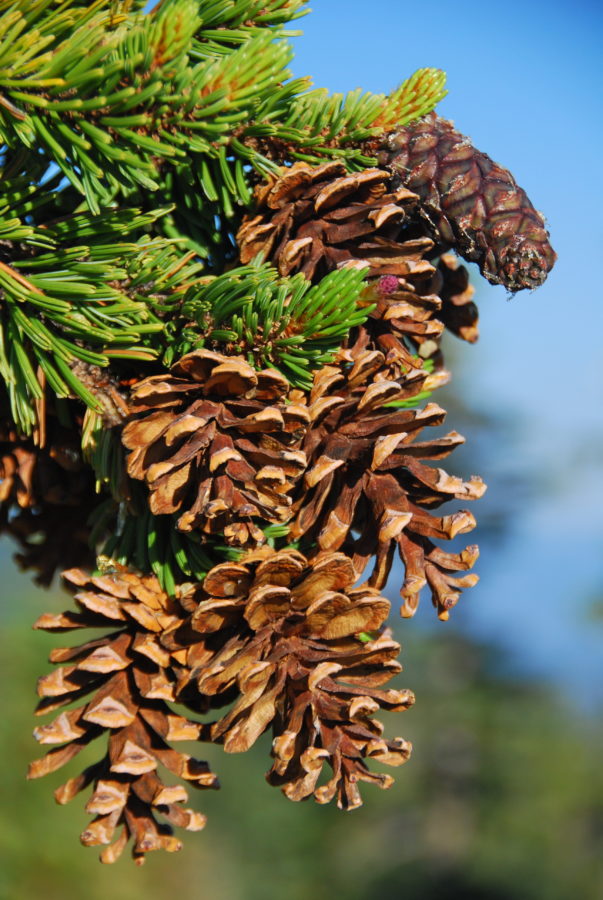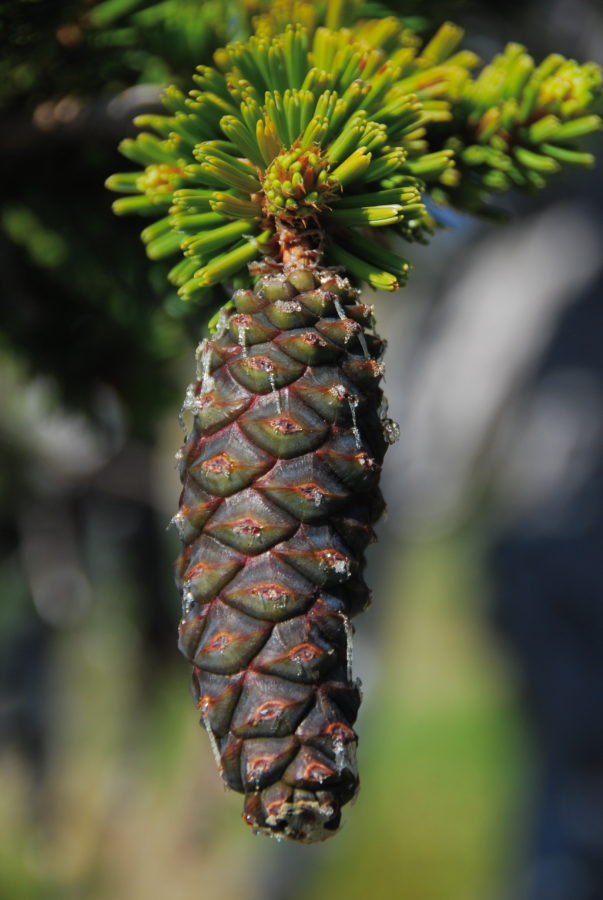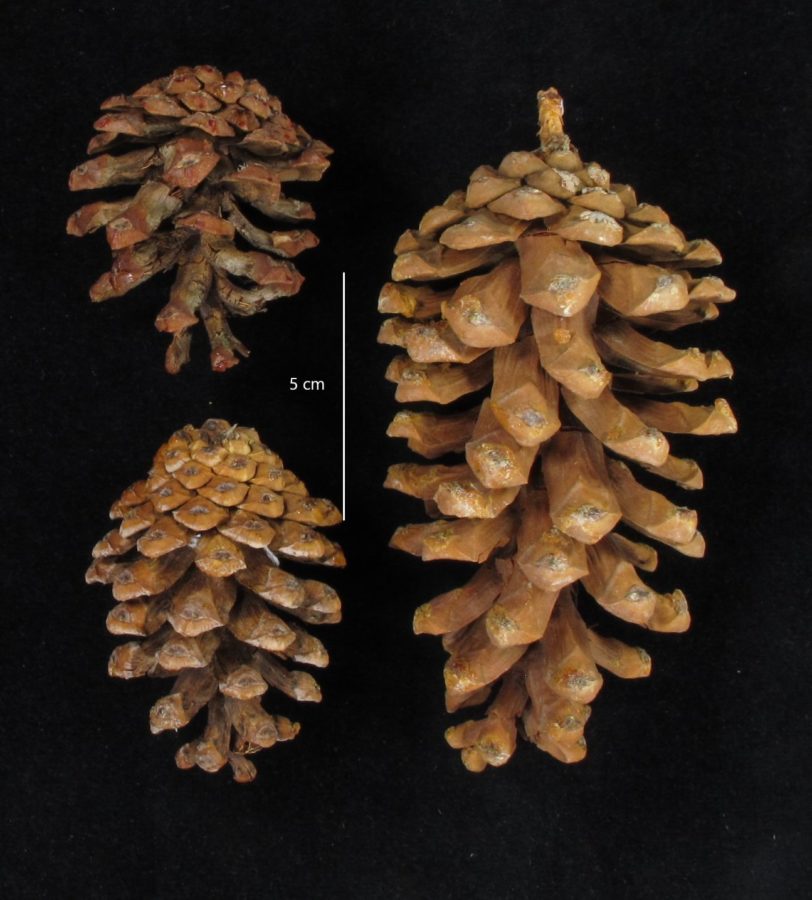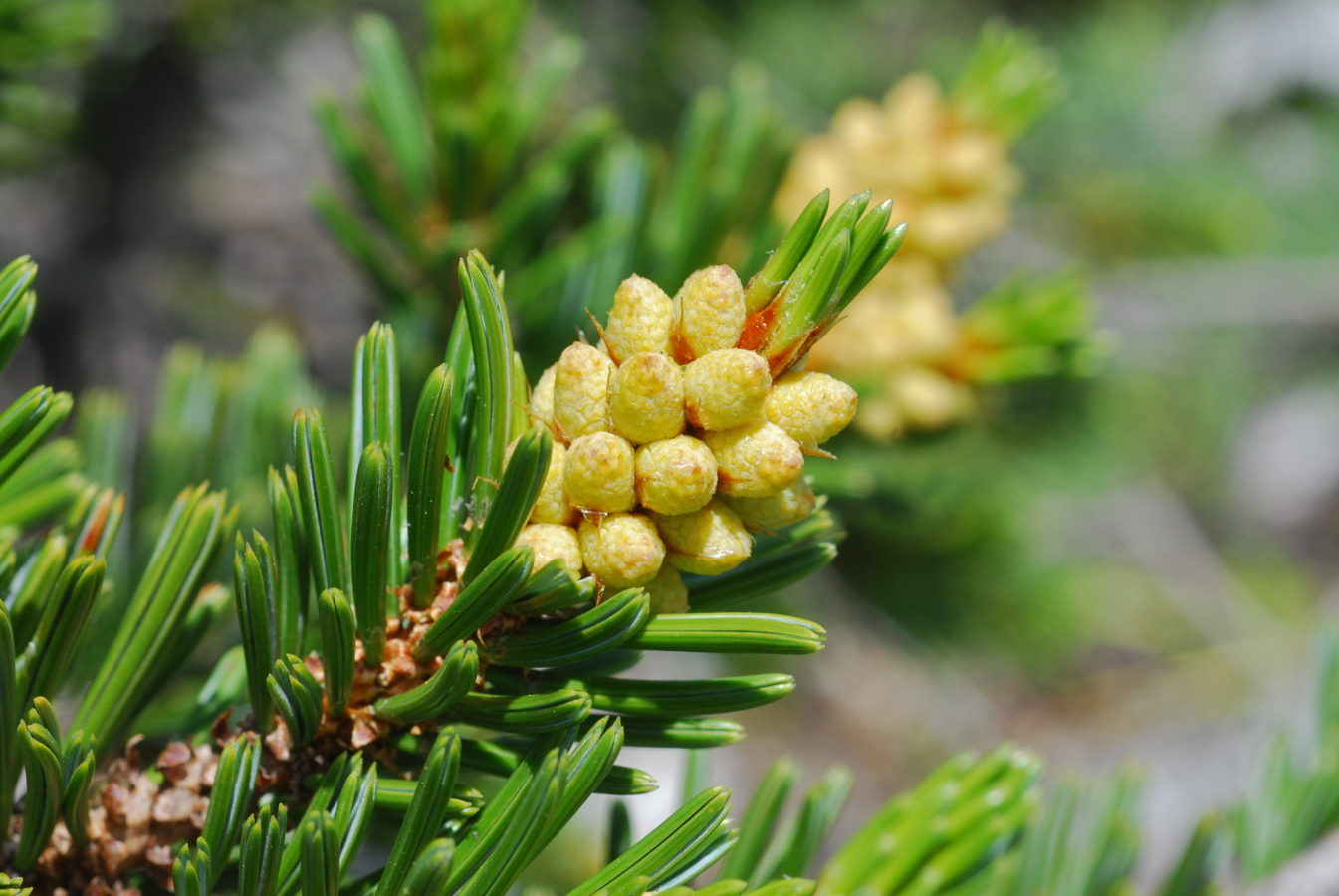Pinaceae
Pinus balfouriana
A long lived high altitude pine from two areas in the Californian mountains. Exotic and native pests and diseases are impacting this species and climate change is a potential serious threat.
Description
Taxonomic Notes
Two subspecies are often recognised: the typical form in the Klamath region and subspecies austrina Bruijn & J.Mastrog. in the south. Morphological differences include differences in the colour of the bark, cones and needles, size of the seed and position and size of resin canals. Phylogenetic studies indicate that the two subpopulations diverged during the Sherwin glaciation during the Middle to Early Pleistocene and there has been little contact since. Other genetic studies indicate that there are significant genetic differences and levels of diversity between stands within each subpopualtion's distribution. Currently the IUCN Redlist does not recognise either of the subspecies.
Human Uses
Foxtail Pine is not a timber tree due to extremely slow growth and general inaccessibility of the stands of relatively small trees. The dense and hard wood is obviously of value for special uses like wood craft and some dead and down wood may be used for this purpose. Almost all stands of this pine are now within protected areas and felling as well as dead wood collecting are strictly prohibited there
References and further reading
- Bentz, B.J., Hood, S.M., Hansen, E.M., Vandygriff, J.C. and Mock, K.E., 2017. Defense traits in the long‐lived Great Basin bristlecone pine and resistance to the native herbivore mountain pine beetle. New Phytologist, 213(2), 611-624.
- Bower, A.D., McLane, S.C., Eckert, A., Jorgensen, S., Schoettle, A. and Aitken, S., 2011. Conservation genetics of high elevation five-needle white pines In: Keane, Robert E.; Tomback, Diana F.; Murray, Michael P.; and Smith, Cyndi M., eds. 2011. The future of high-elevation, five-needle white pines in Western North America: Proceedings of the High Five Symposium. 28-30 June 2010; Missoula, MT. Proceedings RMRS-P-63. Fort Collins, CO: U.S. Department of Agriculture,Forest Service, Rocky Mountain Research Station. 376 p.
- Eckert, A.J. 2006 . Influence of substrate type and microsite availability on the persistence of foxtail pine (Pinus balfouriana, Pinaceae) in the Klamath Mountains, California. American Journal of Botany 93:1615 – 1624
- Eckert, A.J. and J.O. Sawyer 2002 . Foxtail pine importance and conifer diversity in the Klamath Mountains and southern Sierra Nevada, California. Madrono 49: 33 – 45
- Eckert, A.J., B.R. Tearse and B.D. Hall 2008 . A phylogeographical analysis of the range disjunction for foxtail pine (Pinus balfouriana, Pinaceae): The role of Pleistocene glaciation. Molecular Ecology 17:1983 – 1997
- Farjon, A. 2013. Pinus balfouriana. The IUCN Red List of Threatened Species 2013: e.T42345A2974187. http://dx.doi.org/10.2305/IUCN.UK.2013-1.RLTS.T42345A2974187.en.
- Fryer, Janet L. 2004. Pinus balfouriana.In: Fire Effects Information System, [Online].U.S. Department of Agriculture, Forest Service,Rocky Mountain Research Station, Fire Sciences Laboratory (Producer).Available: https://www.fs.fed.us/database...[2017, August 8]
- Kliejunas, J. and Dunlap, J., 2006, August. Status of whitebark pine and other high-elevation five-needle pines with emphasis on Pacific Coast ecosystems; what are the issues and concerns? Perspective from California. In Goheen, Ellen M.; Sniezko, Richard A., tech. coords. Proceedings of the conference: whitebark pine: a Pacific Coast perspective (pp. 27-37).
- Lanner, R. 2007. The bristlecone book: a natural history of the world’s oldest trees. Mountain Press Publsihing Company, Missoula, Montana
- Maloney, P.E., 2011. Incidence and distribution of white pine blister rust in the high‐elevation forests of California. Forest Pathology, 41(4), pp.308-316.
- Mastrogiuseppe , R. J. , and J. D. Mastrogiuseppe . 1980 . A study of Pinus balfouriana Grev. & Balf. (Pinaceae). Systematic Botany 5 :86 – 104
- Sniezko, R.A., Kegley, A. and Savin, D.P., 2017. Ex situ genetic conservation potential of seeds of two high elevation white pines. New Forests, 48(2), 245-261.
- Tomback, D.F. & P. Achuff 2010. Blister rust and western forest biodiversity: ecology, values and outlook for white pines. Forest Pathology 40:186-225.
